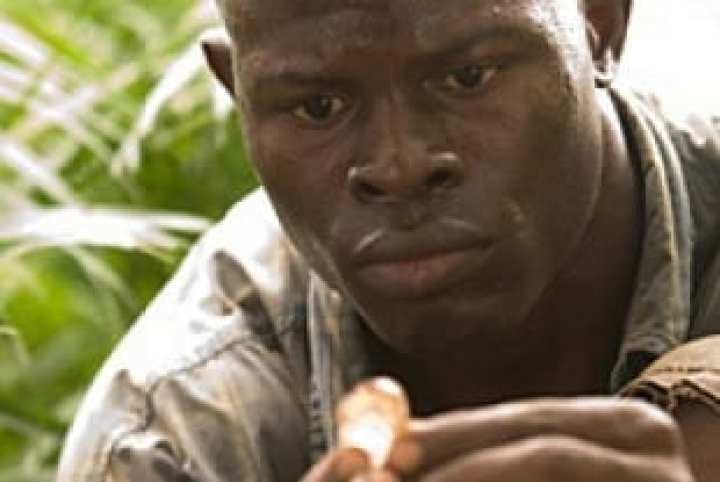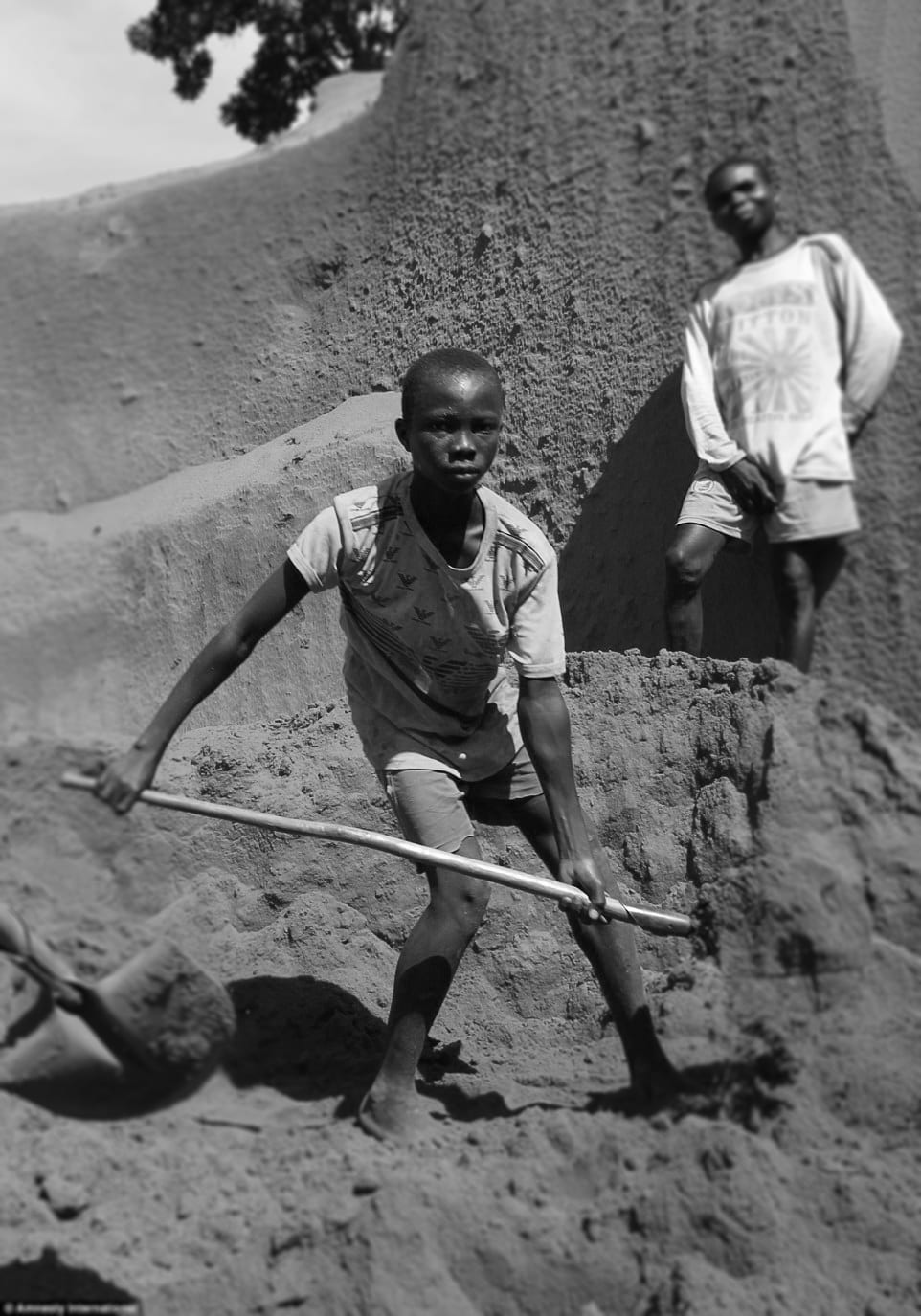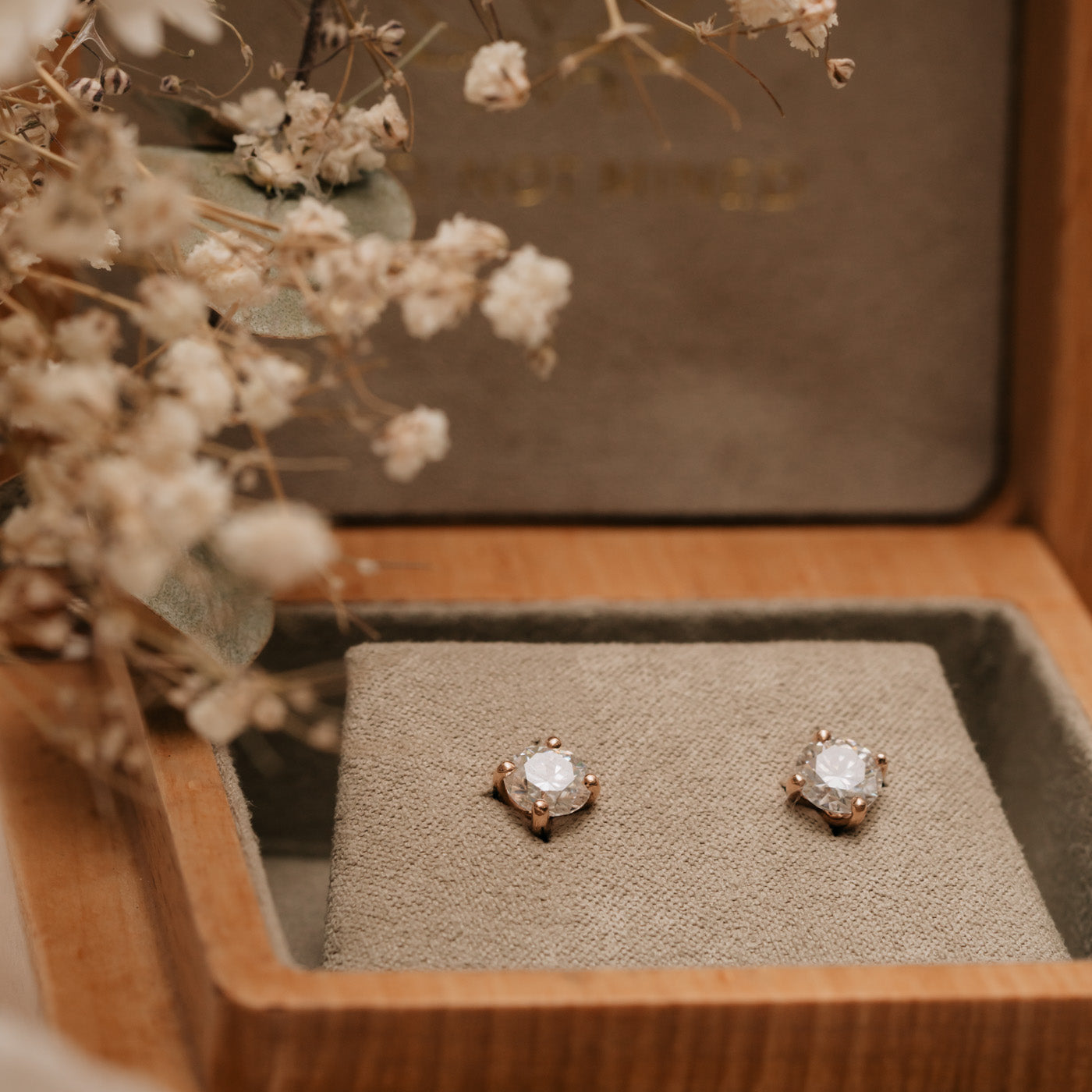DIAMONDS AND LOVE - THE SYMBOLISM AND THE IRONY
Whether it’s a special gift in the form of diamond jewellery or something more noteworthy such as a diamond engagement ring, the renowned saying “diamonds are a girls’ best friend” makes diamond jewellery the preferred choice for those special moments when demonstrating one’s feelings of love. For those looking for a diamond engagement ring in particular, the symbolism associated with diamonds deems them the perfect choice when wanting to represent the love and prosperity of marriage. However, in the case of mined diamonds these beliefs are sadly misconceptions and are far from what mined diamonds truly symbolise.
As awareness about the corrupt nature of the diamond industry grows, more people are searching for a blood free diamond that is free from conflict. If they are not in conflict with humanity, as many mining areas are regulated to be free from this type of conflict, they are in conflict with the environment. All mined diamonds, no matter where or how they are mined, have environmental issues related to the mining operations, even the most regulated. Many think that an ethical alternative to blood diamonds already exists in the form of “conflict-free” diamonds, however conflict-free diamonds are still far from socially and environmentally responsible and cannot be called ethical in any way.
The truth is, there is no such thing as a conflict free diamond that has been dug up from the Earth.
Ethical concerns over diamond mining practices spurred industry leaders to implement better supply chain tracking. While some believe these changes have made a real difference in the trade, others argue they haven’t gone far enough. In truth, the majority of diamonds available for sale are conflict-free diamonds. However, there’s more to diamond ethics than being conflict-free.
Learn more about ethical diamonds and how to choose the gem that’s right for you.
WHAT DOES A CONFLICT FREE DIAMOND MEAN?
For the purpose of this blog, we’ll distinguish between conflict-free diamonds and ethical diamonds. So what does a conflict free diamond mean? A conflict-free diamond or blood free diamond means a diamond that has not not financed civil wars. Ethical diamonds go further, ensuring fair pay, safe working conditions, environmentally sound practices, and no human rights abuses. The 2006 movie Blood Diamond made many consumers aware of the issues surrounding conflict diamonds. A fictionalised account of how warlords in Sierra Leone funded their bloody civil war with diamonds, the movie rightfully shocked Western audiences. Ever since, the question of ethical diamond sourcing has come to the forefront for many young couples purchasing an engagement ring. Read our guide on why Choose an Ethical Bespoke Engagement Ring for more information.

Blood Diamond is a 2006 political war thriller film co-produced and directed by Edward Zwick, starring Leonardo DiCaprio.
THE KIMBERLEY PROCESS
In 2003, the Kimberley Process was implemented in its member states. The scheme verified mined diamonds as “certified conflict free diamonds” but it is flawed and according to their definition, a conflict free diamond is “a diamond that hasn’t financed rebel movements against recognised governments”. This means that these so called “conflict-free” diamonds may still have origins associated with violence, human rights abuses and environmental degradation.
This process aims to follow diamonds from mine to market and ensure that conflict diamonds don’t enter the global diamond trade. However, there’s little oversight and no way to know which mine a diamond came from. Because of the complexities of diamond trading, the stones may change hands dozens of times, from the mine through various wholesalers to a diamond cutter through more wholesalers and, finally, to retail. Along the way, each trader must certify that the diamond parcel is in compliance with the Kimberley Process. It’s possible that conflict diamonds are mixed into these parcels at one stage or another. All we have is the word of the traders and therefore this flawed system is highly vulnerable to smuggling with forged 'conflict free diamond certification', meaning that a blood diamond could still be a certified conflict-free diamond. How can a diamond claim to be “conflict-free” when it’s still in conflict with human rights, in conflict with harmony on Earth and in conflict with the environment? For such a special time, such as a proposal, most would prefer to know that they have a blood free diamond engagement ring to wear as is so symbolic of love and commitment.
ARTISANAL MINING PRACTICES
Informal alluvial mining (i.e. artisanal mining) - the kind done by hand in unsafe conditions by non-unionised workers - presents a number of troubling issues. While the Kimberley Process has greatly reduced the feasibility of conflict diamonds reaching Western consumers, it doesn’t guarantee ethical diamonds. Artisanal mining produces approximately 15% of the world’s diamonds, most of them compliant with the Kimberley Process.
Mining by hand is backbreaking work. Despite this intense labour, and despite diamonds’ market value, an estimated one million African alluvial diamond miners earn less than a dollar a day. Without other employment options, they’re forced to live in extreme poverty in communities that often lack running water and proper sanitation. What’s more, many of these miners are children, some as young as five years old. Not only is the work physically demanding and unregulated (and therefore dangerous), all miners, including children, must work six to seven days a week. This means that child labourers typically do not attend school, condemning them to a lifetime of painful, dangerous work. Since informal alluvial mining is mainly unregulated, conditions are unsafe and unsanitary.
Much of an artisanal miner’s day is spent digging in stagnant, dirty water that breeds insects and disease. Workers lack proper tools, training, and safety equipment, and landslides, mine collapses, and other accidents frequently cause injuries and death. It’s not only mining conditions that endanger the lives of these alluvial miners, many are subject to horrific human rights violations - including violence, torture, and rape - by government militias and armed rebel groups seeking to capture and control mining areas.
This informal mining not only hurts miners and their communities, it wreaks environmental devastation across large areas of otherwise farmable land. In order to find diamonds, miners must first remove the sand along riverbanks, then wash the soil to sort through it. The process renders the land useless by stripping delicate topsoil, leaving large mining pits filled with dirty water in its wake, each quickly becoming a breeding ground for mosquitos and the diseases they carry. Rivers, often hastily dammed and rerouted, become polluted. Forested land is cleared. Fish are killed, wildlife is displaced, and, at its most severe, local ecosystems are destroyed.

Child labour in the diamond industry - Credit Amnesty International
While many would prefer not to buy an artisanally mined diamond, mining provides an income for an estimated 1.5 million artisanal miners worldwide. Since diamonds constitute a major component of the economy in these rural areas, a full boycott could devastate some of the world’s poorest communities.
CANADAMARK DIAMONDS
Although the Kimberley Process doesn’t truly track diamonds from mine to market, Canada’s Dominion Diamond Mines have a fully audited process to ensure ethically mined diamonds. Canadamark diamonds have a unique serial number that you can enter on their website to verify your diamond’s authenticity. Be wary, however, of diamonds advertised as Canadian in origin without the Canadamark certificate.
The origin of these diamonds is certified by the seller, whose audit may not be as reliable as the Canadamark process. In addition, while these diamonds may indeed originate in Canada, they’re often cut and polished in India, where safe working conditions and fair wages aren’t guaranteed. These diamonds come with a price premium, but often poorly cut stones and diamonds with clarity issues still bear the Canadamark brand.
Further reading: Ethical Canadian Diamonds?
There are several reasons why Canadian diamonds may not be considered ethical:
1. Environmental concerns: Although Canada has stricter environmental regulations compared to some other diamond-producing countries, mining diamonds still has a significant impact on the environment. The extraction of diamonds can lead to deforestation, habitat destruction, soil erosion, and water pollution. Additionally, the energy consumption and carbon emissions associated with mining operations contribute to climate change.
2. Indigenous rights: Many Canadian diamond mines are located on indigenous lands, and the development of these mines can have adverse effects on indigenous communities. The mining industry has been criticised for infringing upon indigenous rights, displacing communities, and causing social and cultural disruption.
3. Non-transparent supply chains: While Canadian diamond mining companies claim to adhere to ethical standards, it can be challenging to trace the exact origin of diamonds, making it difficult to verify their ethical status. Without comprehensive transparency and accountability in the supply chain, it's challenging to ensure that no unethical practices, such as forced labour or human rights abuses, are involved.
4. Social impact: Diamond mining operations can have negative social impacts, such as poor labor conditions, low wages, and unsafe working environments. Workers in diamond mines, including Canadian mines, may face hazardous conditions, long hours, and inadequate health and safety measures. Labour rights violations have been reported in some Canadian diamond mines, including instances of exploitation, worker mistreatment, and insufficient compensation.
5. Lack of community benefits: Despite the economic benefits brought by diamond mining to local economies, the distribution of wealth and benefits may not always be equitable. Some argue that the economic gains from diamond mining do not adequately trickle down to local communities, leaving them without significant long-term benefits, while mining companies and a small elite benefit the most.
It is important to note that not all Canadian diamonds suffer from these issues, and some companies may prioritise ethical practices and community development. However, it is crucial for consumers to research the specific mining company and its practices to ensure the ethicality of their diamonds. To summarise, Canadian diamonds may not be considered to be conflict free stones due to concerns over their environmental impact, potential infringement on indigenous rights, non-transparent supply chains, social impact on workers, and inadequate distribution of community benefits. It is essential for consumers to do their research and choose conflict free jewellers that prioritise ethical practices in the diamond industry.
BLOCKCHAIN DIAMONDS
Recently, companies have tested blockchain technologies for tracing diamonds from mine to market. Blockchain, the technology behind bitcoin, creates a chain of information that’s nearly impossible to manipulate falsely. Blockchains tailored to the diamond industry are robust supply chain verifiers. However, most of these tracking systems are still in development and is not a guarantee that you are purchasing conflict free stones. One company which has begun tracking diamonds, Everledger, still has a way to go. Their sample report shows a diamond from a Botswana sort to a GIA certificate. While this is an excellent start to transparency in the diamond industry, tracking would ideally begin at the mine. From mine to rough sort, there’s only the Kimberley Process certificate to rely upon.
FREEDOM OF CHOICE
We believe a man made or a lab grown diamond is the the best option to mined diamonds. It is the only these diamonds that needn't require you to make any compromises on quality, certification, beauty or durability, it ticks all the boxes of the finest mined diamonds and is a genuine conflict free modern choice in diamonds.
 Ethica Diamonds conflict free diamond earrings
Ethica Diamonds conflict free diamond earrings





